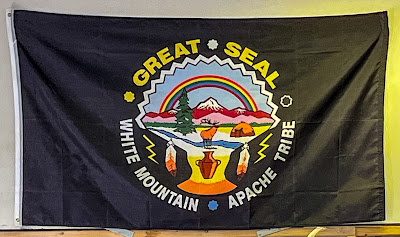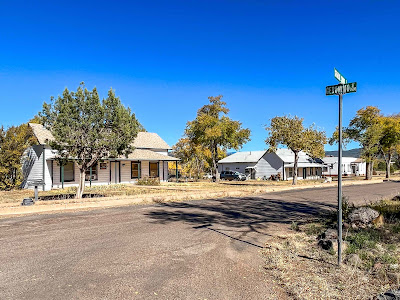Arizona has more than 300 golf courses and its mild winter weather makes it a popular destination for golfers. But operating golf courses is expensive. What happens when they can no longer be properly cared for by municipal or private owners, in Arizona and elsewhere? Rewilding is one answer.
In most cases, the land is sold to developers. The golf course owners get some money back and after the developers build homes or commercial buildings, they can get a good return on their investment.
 |
| View of Vistoso Trails Nature Preserve; photo by S.L. Schwartz |
Rewilding means letting the land slowly return to its natural state, to what it looked like before it was turned into a golf course. It’s not as common as selling a golf course to developers who then build homes or commercial structures on the land but rewilding is gaining in popularity. Both CNN and The New York Times have written about this.
 |
| One of the paths in the nature preserve; photo by S.L. Schwartz |
The main impediment to rewilding is the cost. Someone, or some entity, has to purchase the land and then have enough money to remove any human-made structures that no longer make sense there, return waterways to their natural free-flowing states, and plant native trees and flora, if needed and desired. Typically, non-profit conservation organizations buy the golf courses and then do the work to rewild it.
One such place where this happened is the former Rancho Vistoso Golf Course located about 20 miles north of downtown Tucson in Oro Valley. Built in 1995 and open to the public, the golf course closed in 2018 as a result of financial problems.
 |
| Reminder the area used to be a golf course; photo by S.L. Schwartz |
Developers wanted to buy it but nearby homeowners objected. They formed a non-profit organization in 2019 and together with The Conservation Fund, bought the golf course in 2022. Then they donated it to the Town of Oro Valley.
Renamed Vistoso Trails Nature Preserve, a plan to rewild the golf course was designed and is in the process of being implemented. Walkers and cyclists share the concrete paths that meander for six miles throughout the former golf course. Tunnels go under area roads so you can avoid car traffic.
 |
| Tunnel underpass; photo by S.L. Schwartz |
My walk there today was very pleasant. There is a large parking lot at the trailhead and two pathways to choose from when starting out. Over the course of two and a half hours, I encountered many other walkers and a few cyclists.
You can’t really get lost because you’re walking on paved trails, which loop around the 202-acre nature preserve. I saw 4-5 different bird species, several types of cactus, lots of mesquite trees, grasses and a few flowers, and 1 lizard but no large animals, probably because it was mid to late morning when I was there.
 |
| Purple prickly pear cactus; photo by S.L. Schwartz |
The rewilding of Vistoso Trails Nature Preserve is not yet finished. There are plans to create a desert garden in the pond that was part of the golf course.
 | |
| View of the drained pond and old pipes; photo by S.L. Schwartz |
It will be interesting to see what the land looks like months and years from now and since I did not see the area where the ancient petroglyphs are, I have another reason to go for more walks there in the future.














